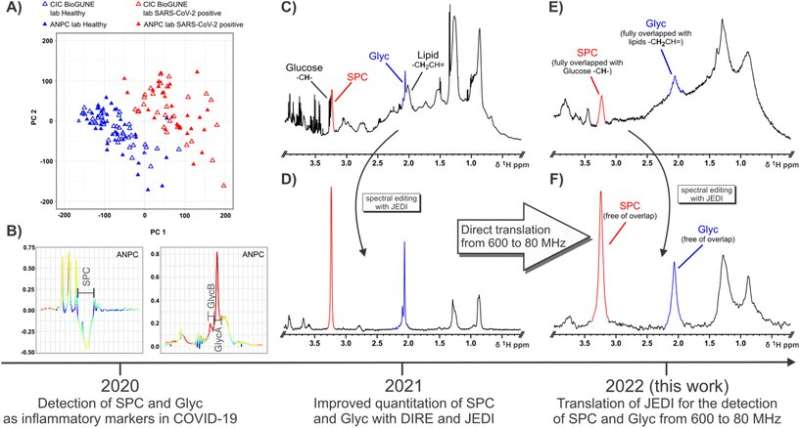A step toward local long COVID-19 diagnostics

Murdoch University's Australian National Phenome Center (ANPC) has made a vital technological finding that could help general practitioners diagnose the long-term effects of COVID-19 and long COVID-19.
With no current framework or diagnostic tools, patients suffering from the effects of COVID-19 and long COVID-19 present general practitioners with a major health challenge.
But the latest discovery from the ANPC will aid the diagnosis of debilitating symptoms that can include severe headaches, extreme exhaustion, heart palpitations and brain fog.
It comes in the form of a new diagnostic tool that could be easily deployed in medical practices across the world, at low cost.
Eighteen months ago, the researchers used multi-million-dollar nuclear magnetic resonance (NMR) technology to identify new diagnostic molecular biomarkers that tell if someone has the disease, without the need to detect the disease itself.
They then used this work to develop an inexpensive clinical NRM, that general practitioners can use to detect vital blood markers to predict the long-term effects of the conditions.
The technology uses a specially designed set of radio pulses to extract signals from highly specific biomarker signals (from inflammatory glycoprotein markers and fats bound to lipoproteins) that gives a rapid diagnosis in approximately a minute.
The findings were recently published in leading analytical chemistry journal, The Analyst.
Professor Jeremy Nicholson, Director of the ANPC and Pro Vice Chancellor for the Health Futures Institute, said they represent a translational triumph that will ultimately benefit COVID-19 patients in clinics throughout the world, as well as have the possibility for application across many other diagnostic areas including cardiovascular disease.
"We only discovered these signals about 18 months ago using a more expensive NRM instrument, but with some pulse sequence modifications, we are now able to get identical results on small machines that costs one tenth of the price," Professor Nicholson said.
"We think this technology (low field NMR spectroscopy) will probably have many other clinical applications in the future and may be of particular value in monitoring some of the residual effects of long COVID in individual patients," he added.
The clinically deployable technology was developed in conjunction with the ANPC's strategic partner, Bruker BioSpin GmbH who manufacture the NMR instruments.
Professor Julien Wist from the ANPC said this technological advancement has many benefits, including cutting costs.
"It ticks all the boxes for a successful translational technology: low costs, low maintenance, no specialist required and no need for complex algorithms to understand the data," Professor Wist said.
More information: Philipp Nitschke et al, Direct low field J-edited diffusional proton NMR spectroscopic measurement of COVID-19 inflammatory biomarkers in human serum, The Analyst (2022). DOI: 10.1039/D2AN01097F



















